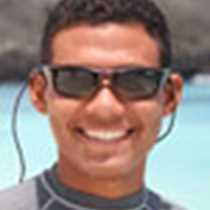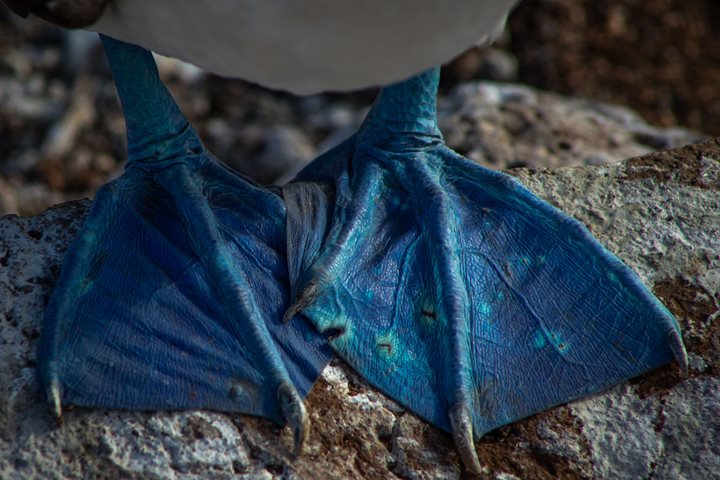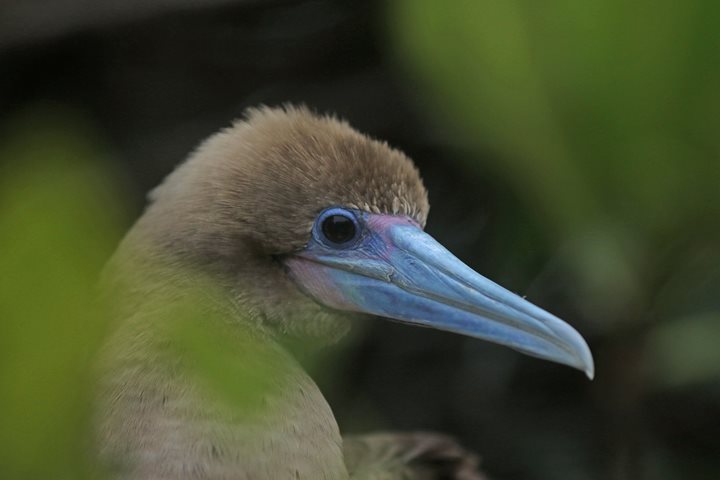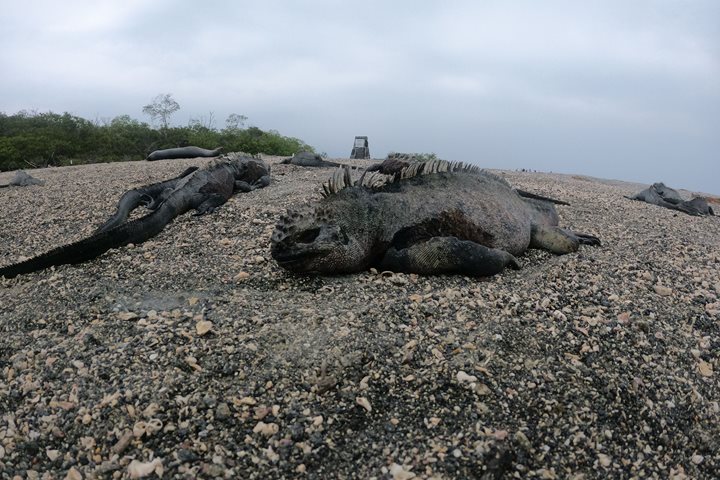After a long and smooth navigation around the north of Isabela, we arrived at the next island of our expedition, Santiago. Early in the morning we dropped anchor not far from a beautiful beach named Espumilla, meaning “frothy waters” as there is usually surf here. The color of the sand is pink-brown, and a beautiful row of mangroves borders it. This is an important sea turtle nesting beach, therefore we found many leftover eggshells above the sand. The babies have already emerged and made it to the big, wide ocean. Some of our guests stayed with our photo instructor on the beach to make the most of the beautiful morning light and the peace of the area, while a few others ventured inland through the very old mangrove and incense tree forests behind the beach. Many birds approached us including small ground and tree finches, Galapagos mockingbirds and flycatchers. Some adventurous kayakers had a chance to explore the coastline between Espumilla Beach and Buccaneer Cove. There they found birds sitting on the rocks, such as blue-footed boobies, brown pelicans and herons.
The morning was full of activities so later on, after a well-earned breakfast, the guests were divided according to their own preference into two groups: snorkelers and Zodiac riders. Buccaneer Cove has dramatic cliffs much preferred by sea birds like the swallow-tailed gulls and the brown noddies and the beaches of this area usually have a few sea lions. Snorkelers enjoyed clear blue waters with various fish species, like parrot fish, razor surgeons and creole fish.
Santiago offers magnificent landscapes especially in James Bay. By mid-afternoon, we landed at Puerto Egas which was once a small settlement whose inhabitants used to exploit a nearby salt mine to export to mainland Ecuador. We followed a trail that allowed us to admire a coastline not compared to anything we had seen before. There were flows of pahoehoe lava mixed with tuff and cemented volcanic ash layers. This elegant coastline is inhabited by various endemic and unique Galapagos species, particularly the marine iguanas. Some Galapagos sea lions dotted the coast, and at the area locally known as “the grottos” (former lava tubes that run into the sea) live a small colony of Galapagos fur sea lions. Not as inquisitive as the other species, they inhabit places that offer them plenty of shade since they have a much thicker coat of fur.
We returned slowly back toward our landing beach, from which we enjoyed the equatorial sun. It was now much cooler as it was the end of the day and the sun was setting behind the silhouettes of the young volcanoes of Isabela and Fernandina in the West. This was yet another remarkable day in the isolated archipelago of the Galapagos.







